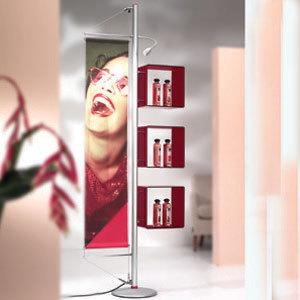Understanding User Behavior in Queue Systems: A Key to Effective Design
When designing and implementing queue systems, understanding user behavior plays a crucial role in their effectiveness. Whether in airports, shopping malls, museums, or offices, how people move, perceive, and interact with their surroundings directly impacts the success of these systems.
At Tekno Grup, we focus on creating solutions that not only organize people but also align with the natural ways users engage with their environment. Here are a few key insights into how understanding user behavior can improve queue systems.
1. User-Centric Design: Anticipating Movement Patterns
People tend to move in predictable patterns, especially in crowded spaces. Whether walking through a busy exhibition hall or standing in line at an airport terminal, users are often guided by visual cues like signs, lights, and color contrasts. For queue systems to be effective, they must align with these natural tendencies.
For example, people instinctively follow paths that are clear and easy to navigate. Queue systems that organize users into neat lines, with clearly marked entry and exit points, are far more efficient. Additionally, systems that align with the natural flow of foot traffic—such as directing people towards service desks or exits—tend to be more successful.
2. Psychology of Colors and Shapes
Colors and shapes are more than just aesthetic choices—they have a significant impact on how users behave. Bright, attention-grabbing colors like red or yellow are commonly associated with urgency or caution, whereas blue and green are often seen as calm and welcoming.
At Tekno Grup, we design queue systems that take advantage of these psychological triggers. We use contrasting colors to help people quickly identify their position in line or signals to maintain order. Shapes that match universally recognized symbols (such as arrows or stop signs) make the navigation more intuitive and reduce confusion.
3. Clear and Simple Messaging
Cluttered, overly complex signage often leads to confusion and delays. The human brain processes simple, straightforward information far faster than complicated instructions. In environments where speed is essential—such as airports, hospitals, or retail stores—users need quick, easy-to-follow guidance to ensure an efficient experience.
Tekno Grup’s queue systems avoid overwhelming users with unnecessary details. We focus on providing clear, concise instructions and visual cues that help people understand their next steps without distraction. Whether it’s directing individuals to the correct counter or indicating where to stand, simplicity is key.
4. Consistency Across the Space
Inconsistent design across a queue system can create confusion. Users expect a uniform design and consistent signage throughout a space. When queue systems use different fonts, colors, or symbols, it can make navigation difficult and lead to hesitation, causing delays and inefficiency.
Tekno Grup’s queue systems are designed to be consistent, with each element working together to create a seamless flow. From stanchions and barriers to signs and digital displays, our solutions maintain a cohesive visual language, ensuring clarity for all users and improving overall efficiency.
5. Adapting to Different User Groups
Different groups of users have different needs. For example, children, elderly individuals, and people with disabilities may require additional or customized guidance. High-contrast signs, braille indicators, or visual cues can make a big difference for those with visual impairments.
At Tekno Grup, we ensure that our queue systems are adaptable to various user groups. Our goal is to create inclusive, accessible solutions that can be easily understood and followed by everyone, ensuring no one is left behind, regardless of their needs.
6. Predicting Behavioral Responses
Understanding how people are likely to respond to certain cues can significantly enhance the design of more intuitive queue systems. For example, when people encounter a sign pointing in a specific direction, they are likely to follow it without questioning. However, if they encounter a barrier or confusion in the queue, they may hesitate, look for an alternative route, or feel uncertain.
By analyzing how users react to different types of cues, Tekno Grup can create more efficient and effective systems that guide people smoothly through the process. This ensures minimal frustration and maximizes the flow of people in busy environments.
Conclusion: Enhancing User Experience with Smart Queue Systems
At Tekno Grup, we understand that designing an effective queue system goes beyond placing stanchions and signs in strategic locations. It’s about anticipating user behavior, applying psychological principles, and creating intuitive solutions that work in harmony with how people naturally navigate their environment. By considering the ways people interact with spaces, we can design queue systems that improve user experience, reduce confusion, and ensure safety across various settings.
Ultimately, understanding and designing queue systems with human behavior in mind results in more efficient, user-friendly, and safe environments for all users.




